
策展人
Artist Interview: Li Xinmo|Open my body and let more women see their pain
Women’s Art Season | Artist Interview
Penumbra connects and empowers Chinese female creators, covering fields including but not limited to art, literature, film, drama, music, dance, design and architecture. It aims to promote excellent artistic works, explore topics related to female creativity, and create a safe, free, empowering and inspiring space for women in the cultural and creative industries. Its "Women's Art Season" was launched in 2021, and the first edition landed in Beijing, turning Beijing into a women's art museum. The exclusive interview with the artist provides an in-depth understanding of the artist and the story behind his creation. It is hoped that the audience will have a richer understanding of the collective destiny of women in different eras through the curator's questions.
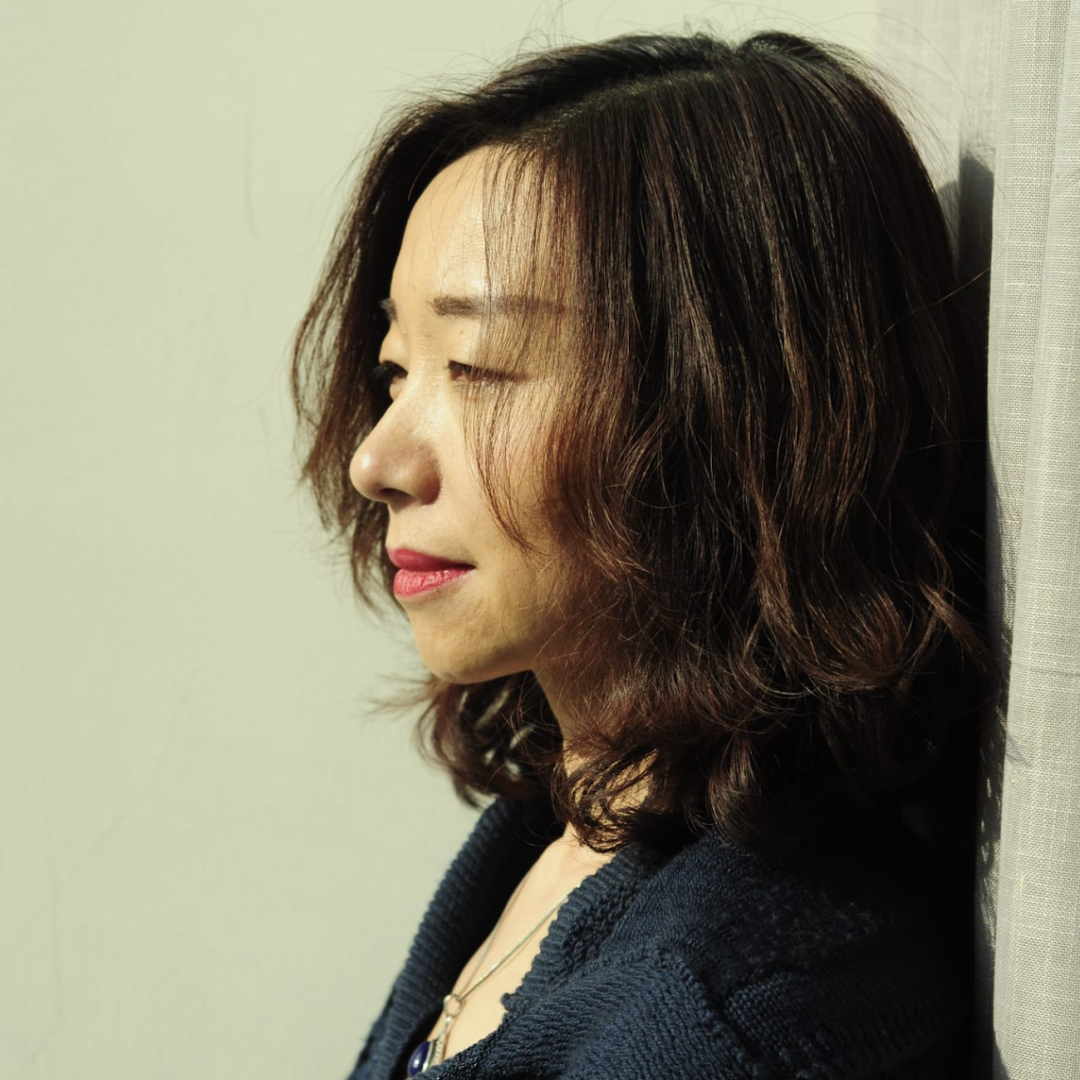
Guest introduction
Artist| Li Xinmo: Born in the late 1970s, graduated from Tianjin Academy of Fine Arts. Her creations involve a series of issues such as gender, ethnicity, environment, politics, etc., using performance and images as the main media. The work has a strong sense of presence, full of visual tension and spiritual shock. She is also a feminist critic who believes that contemporary women should transcend gender and pay attention to the broader world beyond the body. Her works have been exhibited in the Louvre Museum in France, the Museum of World Culture in Sweden, the German Women's Museum and other institutions; participated in the Toronto International Art Biennale, the China-Europe International Art Biennale in Prague, etc.; participated in the "German Culture Festival Forum" and "China International Contemporary Art Seminar", "Fudan University International Women's Art Seminar", "Thirty Years of Chinese Women's Art" and other international seminars; academic articles have been published in "National Art", "Oriental Art Masters", "Big Art" and other publications. She has been honored by UN Women.
Interviewer | Li Jiete: Feminist curator, former curatorial researcher at the National Gallery of Art.
Conversation overview
- Good art has a kind of predictability;
- I wanted to speak out about women’s most real, intimate and painful experiences;
- I have the courage to say that I am a feminist without fear of being stigmatized;
- The world of cyborgs allows us to reimagine gender relations.
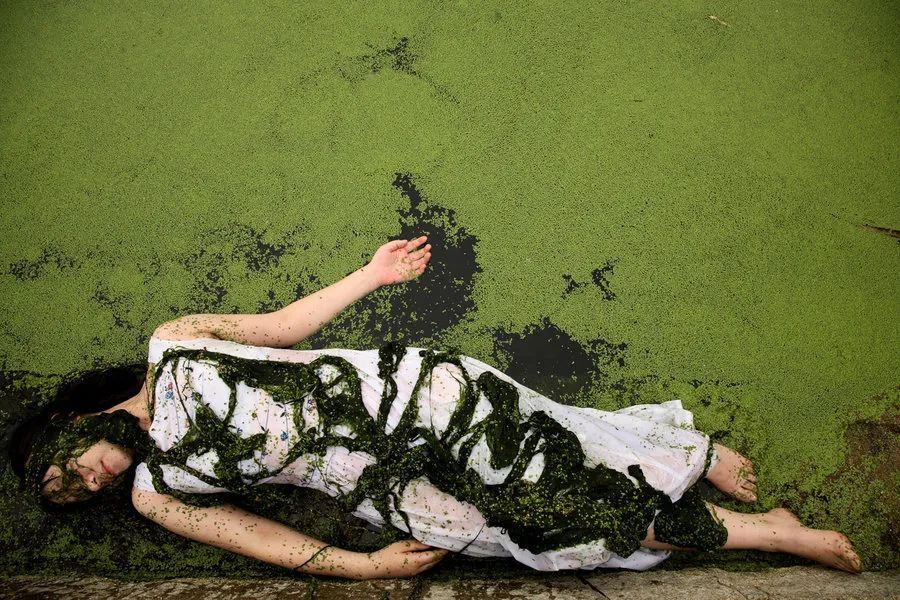
Part I. Good art has a kind of predictability
Li Jiete:
Your early works echoed current social events across time and space: "I Want to Breathe" in 2006 reminds me of the slogan "I Can't Breathe" of the American Black Lives Matter in 2020; "Memory of the Vagina" in 2008 One of the works in the series shows a chain being inserted into a woman's vagina, which reminds me of the Chained Woman incident. People say that good art is prophetic. What do you think?
Li Xinmo:
When I look back at my works, I am often surprised because indeed, some of the works I did before happened to me later. "I Want to Breathe" is a 2006 work that filmed a miner suffering from silicosis who was coughing before he died. This is about human rights, but also about life and death. The last thing those miners were deprived of was the right to breathe.
In 2015, smog broke out in China, especially in Beijing. When the smog enveloped the sky, breathing became a huge problem. Inhaling the air filled with smog is equivalent to inhaling poisonous gas, and breathing normally has become a luxury. At that time, when people went out, some had put on gas masks, and I had to install an air purifier in the room. But I always have to go out and my children have to go to school. Every time I see young children wearing masks to go to school, there is an unspeakable pain. The haze at that time also reminded me of the work "I Want to Breathe". I have also followed the Black Lives Matter incident that happened in the United States in 2020 that you mentioned. When breathing is threatened and you cannot breathe, that is when your life is threatened. Breathing is the basic right to life. Depriving oneself of the right to breathe also deprives one of the right to life.



You also mentioned "Memory of the Vagina", which is a work in which an iron chain is inserted into the vagina. It was only during this period of time that I was sorting out the works that I noticed its connection with the "Women in Chains Incident". When making this series, it all revolves around the cultural and historical memory of the vagina, female experience, and visual image memory. Among them are memories of women's abortion and childbirth: surgical scissors and instruments inserted into the vagina; there are also memories of sexual violence: knives and guns inserted into the vagina; iron chains with locks inserted into the vagina are examples of chastity belts, chastity locks, and A visual representation of female circumcision. Women are tied to everything about sex and reproduction. This is also the identity and function of women in patriarchal society. In the long history of mankind, women have neither their own subjectivity nor independent personality. They are just reproductive tools in a patriarchal society. All kinds of control and possession of women can be attributed to the control and possession of women's bodies, sex and vagina, or even deprivation. The incident of women in chains that happened today is not an isolated incident, but the fate of countless women. Deep-rooted patriarchal ideas are the root cause of these incidents. Poverty and ignorance intensify the solidification of this patriarchal ideology. Women are just commodities, tools for reproduction, and an objectified existence. Putting a woman on a dog leash and giving birth to eight children seems impossible in the 21st century, but it happens. When I created "Memory of the Vagina", when I chose those symbols that symbolized violence, I actually did not expect that the Woman in Chains incident would happen this year, but my work did have a connection with the present, like a prophecy .
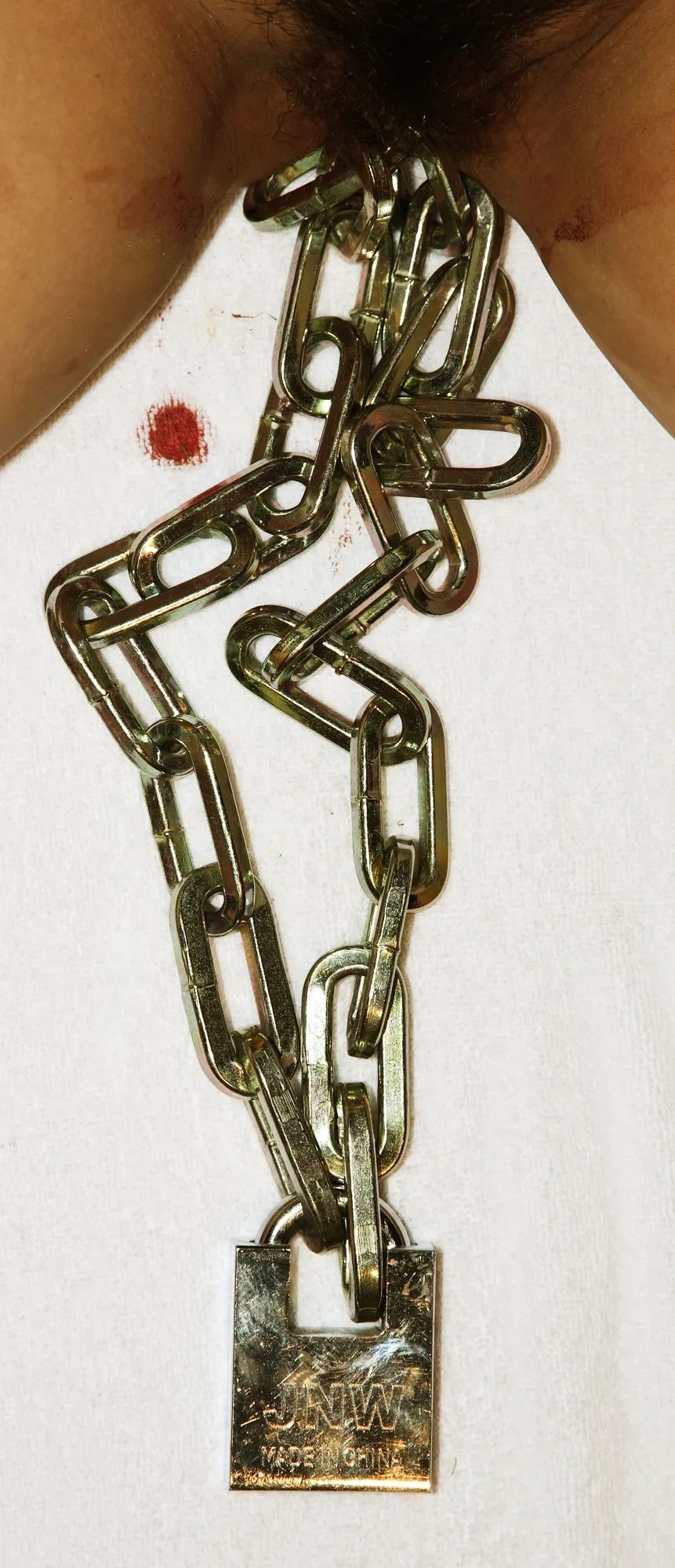
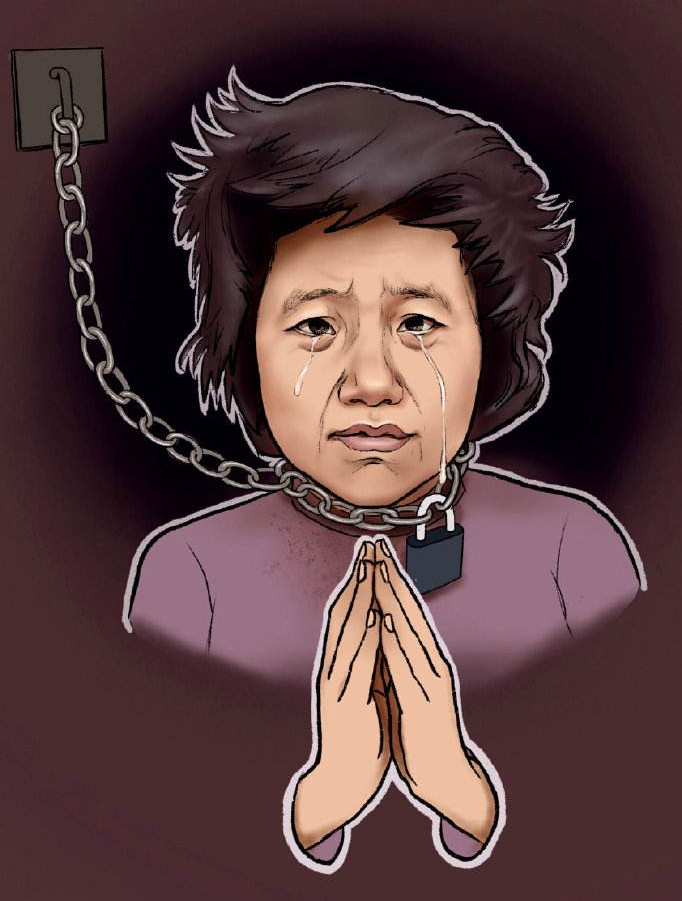
In addition to this, the same is true for some works, works from many years ago are now reappearing. In my solo exhibition "Exclusion" in Germany in 2015, the performance installation work inside was called "Isolation": animal bones, land, and dying people lying on hospital beds in the blood of animals. It depicts the degradation of the natural world under global capitalization, man's deprivation of nature, land and the animal world, and finally puts himself in a state of destruction. It's like a depiction of the world we live in today. Since 2020, "isolation" has become one of the most familiar words for people. But in 2015, people’s imagination of segregation was limited to historical apartheid. Now "isolation" has become our reality. As a distant memory, the plague seems to have become a thing of the past, but history has allowed the plague to reoccur in this era of highly developed technology and medicine, and the method of epidemic prevention is almost the same as a hundred years ago - isolation.


Racial and ethnic hatred and exclusion triggered by the pandemic are also intensifying. The open and inclusive world that people try to build is so fragile that it begins to crumble in the face of the plague. This was accompanied by the expansion of totalitarian politics. Among them is Afghanistan, which is again ruled by the Taliban. I have a light installation about Islamic women veiled in black that also seems to be a prophecy for the women who are now being re-enslaved by the Taliban.
Indeed, as you can see, some of my works are prophetic, probably due to my exploration of some common human emotional experiences and social issues, so in a sense, these works reveal universality.
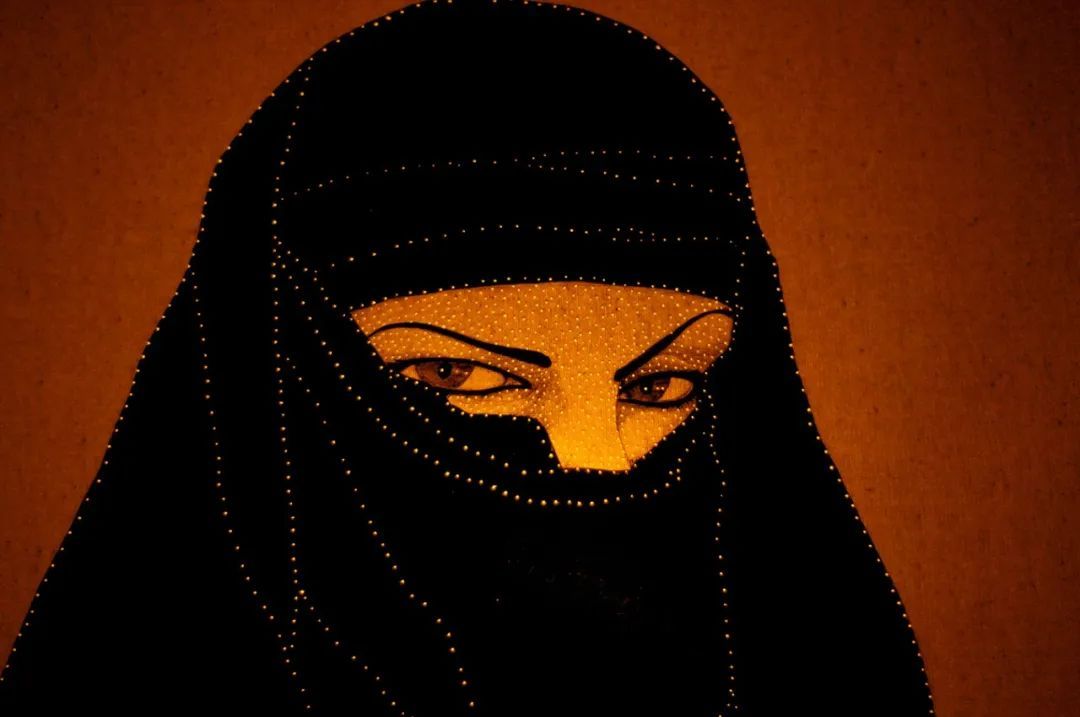
Li Jiete:
Years have passed, and the same social problems continue to occur. In every corner of the world, there are always oppressed and exploited people. As an artist, what can you do for them? What role can art play in social issues?
Li Xinmo:
Inequality is a long-standing social problem and the cause of many social events. It is almost difficult to solve. This will also be the situation in the future. In an unequal relationship, there must be a relationship between oppression and oppression, exploitation and exploitation. Such relationships also exist between genders. Feminism is trying to change this unequal social structure and lift the oppression of women by the patriarchal system.
An important direction of contemporary art is the intervention of social issues. Beuys's concept of "social sculpture" has influenced many artists, and my creations have also been influenced by his ideas. In addition, people like Hans Haacke once influenced me. He closely integrated art with social politics and used art to raise sharp questions. There are also some artists who truly practice the concept of art intervening in society, allowing art to take place in real social scenes, such as participating in protests through art. For example, the "guerrilla girls" in the United States perform their art in protests. . However, art cannot directly help others like social workers or human rights lawyers. Art still needs to be expressed through certain forms and methods, so it is more about raising questions and presenting them, and influencing public perception through artistic and visual expressions. Know.

I think art changes society not directly, but indirectly. Its first job is to change people's consciousness. In fact, when people's consciousness changes, society will also change. I have also been troubled by this problem, that is, I often find that art is powerless in the face of cruel reality. But as time goes by, my thoughts have changed, that is, art has its own special meaning and role, and the most important thing is its effect on the human spirit. Good art can arouse people's thinking and move people, thus opening up people's knowledge, expanding their thinking, and cultivating inner empathy. These are of profound significance to a person's spiritual world. Because society is composed of individuals, when the spiritual world of individuals is improved, the entire society will be improved. Therefore, art changes society by changing people's cognition.
When it comes to the role of art in society, it is like a spiritual healer who soothes and heals the human soul; like an observer of the world in depth; like a discoverer who constantly uncovers the truth and the essence of things; like giving forms the power of love. messenger. Art opens up different perspectives for people to view the world; provides different ways of thinking and cognition; and creates a place of spiritual healing and rest.
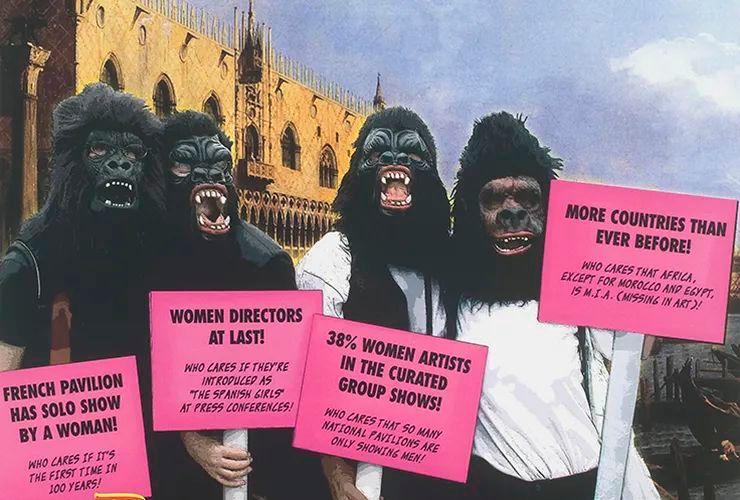
Part II. I want to tell women’s most real, private and painful experiences

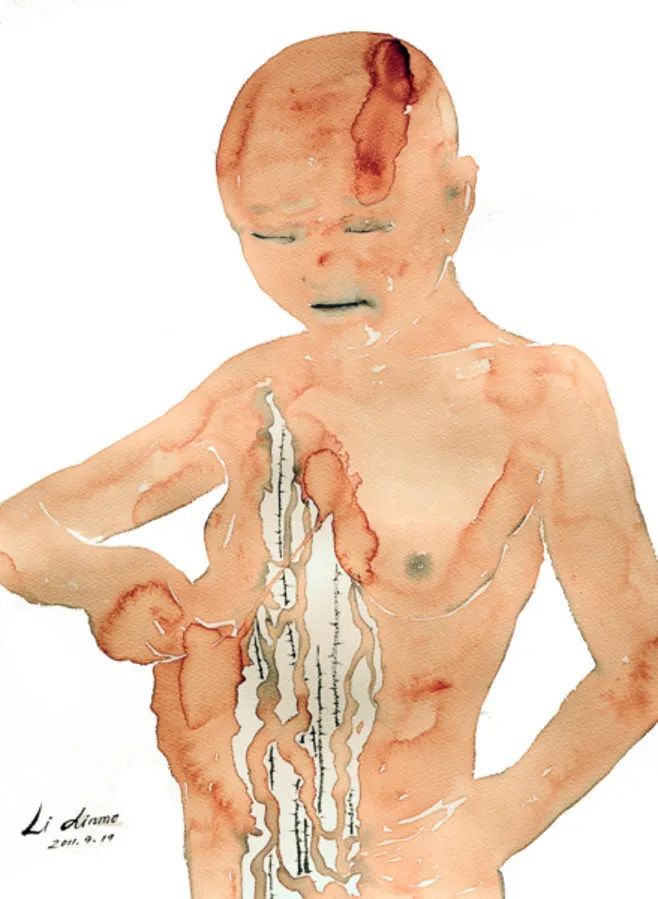
Li Jiete:
"Self-Portrait with Menstrual Blood" depicts people without skin. No skin means no protective layer, and they are ready to feel great pain at any time. You said that this is your spiritual portrait and the collective portrait of many women. Pain plays an important role in your works. "Death in Xinkaihe", "A Farewell Ceremony", "Rape"... are all works full of extreme pain. How do you endure the stench and pain during a performance? Why do you choose to face pain and sadness over and over again? This kind of sadness will make you cry when you look back more than ten years later.
Li Xinmo:
Many of my works are related to personal experiences. My personal story is filled with painful and sad memories. From an early age, I experienced family adversity, alcohol and violence. My childhood became a nightmare that I could never get out of. This nightmare continued until I was in college and after my father disappeared. The imprint of my original family affected my later life. Sexual assault, miscarriage, childbirth, control, betrayal, these experiences have filled my adult life. What I experienced was pain again and again, from physical pain to mental pain. And when I started to create my own contemporary art, especially performance art, these experiences came together and became the source of inspiration for my creation. Every time I started to perform, those deep-seated despair and self-destructive desires were summoned, and every time I seemed to be acting in a state of near-death. I can't feel my own existence, nor can I feel pain or danger. I also often wonder why I make such art. When I look back at these works, I cry myself because I can’t stand them anymore. Every time the performance is performed, the audience is always moved and shocked, and many people shed tears. Every performance takes all my energy and energy, so I often have a sense of exhaustion at the end that takes a long time to recover from. The emotion I put into the work is real, the pain is real, so people feel it. After every performance, I feel a sense of release, as if something about my past that had been holding me captive has finally let go. It seems that through performance art, I am saying goodbye to my former self again and again. During this process, the trauma seemed to be gradually healed.
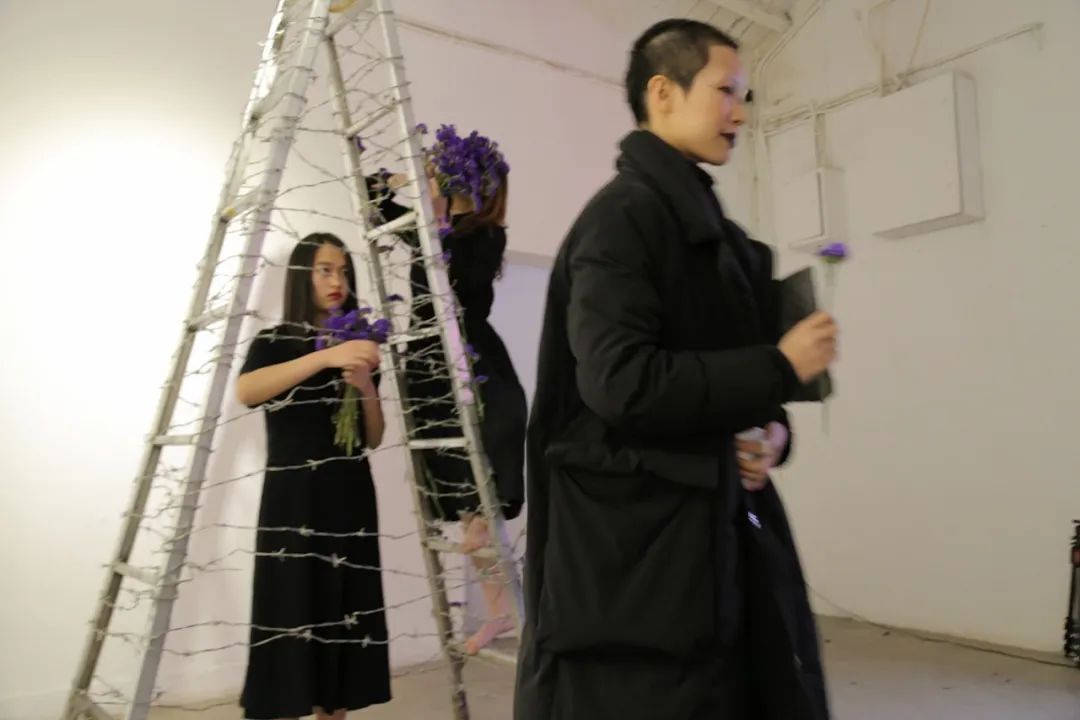
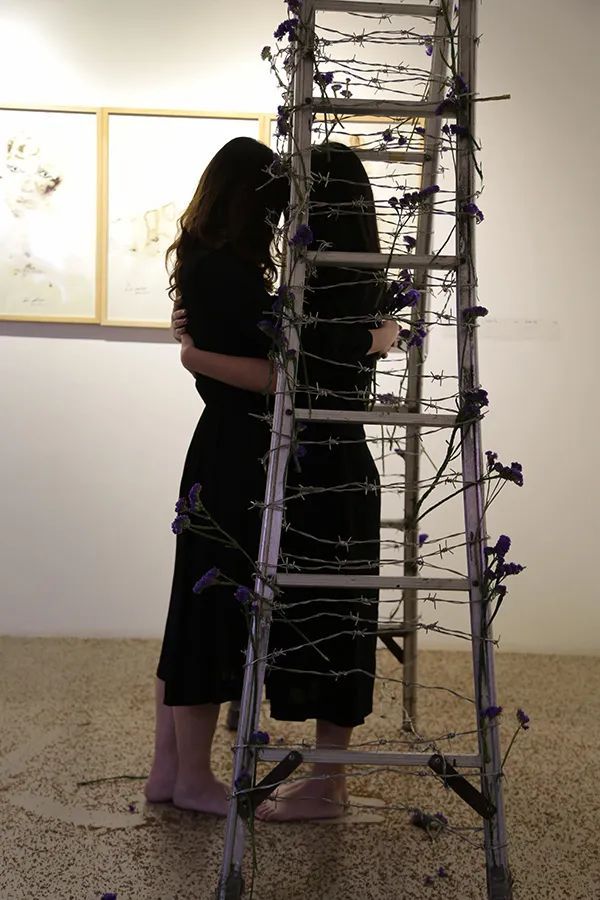
Odor and pain often appear in my actions. When I am performing actions, when I enter that state of despair and the place of death, I actually cannot feel the stench and pain, or only these strong things can make me Some relief from the pain inside.
I have been walking towards the depths of my spirit, and in the depths of my inner world I experience pain, despair and the consciousness of death. At the same time, I also know that in the depths of the spiritual world, people's emotions are connected. For example, it can be said that the experience of sadness and pain is common to all human beings, and as a woman, I understand better the pain of a woman growing up because I have experienced it.
Therefore, although I am expressing individual spiritual experiences and feelings, these are also shared by everyone, especially women. I believe that human beings are one, and that I and all things are one, and this concept has always affected me. I’m afraid this is why people are moved to tears when they see my works.
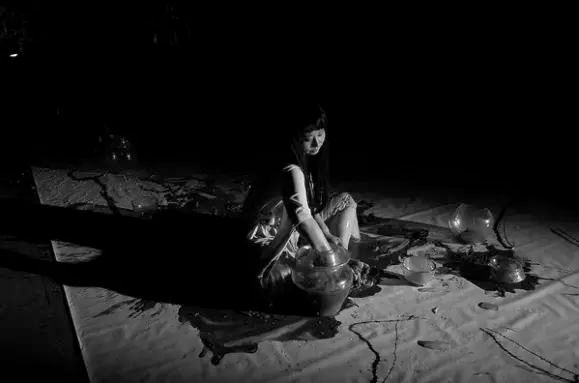
Li Jiete:
Is art creation also a form of healing? When the pain is put aside and fully presented in front of you, is it also a kind of letting go?
Li Xinmo:
Art is indeed a healing process for me. The image of death appears constantly in my work. In "Death in Xinkai River", I recreated a scene of death in the water. When I walked into the river that symbolized death, I seemed to experience a death. When I look at these performance photos, my death is objectified, and I become the other who looks at my death, analyzes it, and even thinks about it. During this process, I did feel that my obsession with death was gradually lessening, and I began to gradually leave death.
Childhood trauma is difficult to erase and will not disappear with time. Those traumatic memories keep coming back in adulthood. They become subconscious, appear in dreams, and are constantly recalled. That kind of deep pain and death will get deeper and deeper if it is kept buried deep in my heart. Only by exposing them and looking directly at them can healing be possible. Art creation, especially performance art, became an outlet. I can express the ineffable in my art.
"A Farewell Ceremony" presents the state of my life at that time. I did find some kind of release as I lay in the freezing water, experiencing that extreme and abstract state of death.
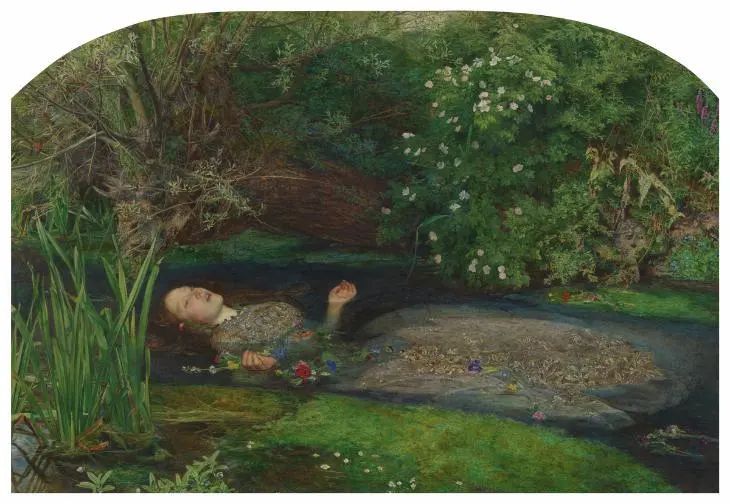
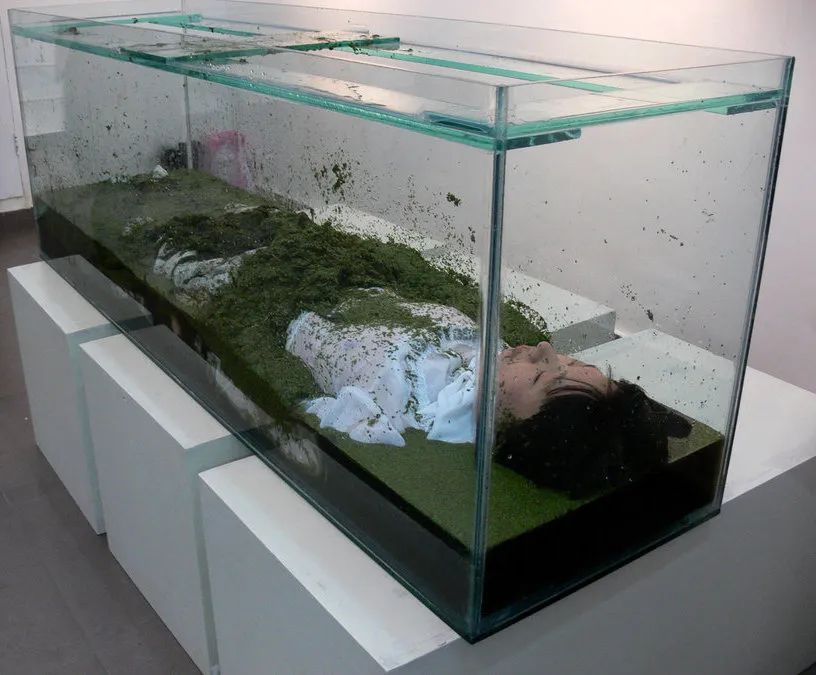
There is also "Nowhere to Say Goodbye", which is a work about my childhood memories. I tore a childhood family photo into pieces and had the workers bury the pieces in 12 grave-like mounds. Then I dug through the mounds one by one, looking for the pieces, and finally put the pieces back together. . I dug through the mounds of soil like opening graves. The search process was full of hardships. I almost exhausted all my energy digging through the soil, looking for those tiny fragments. When I was doing that work, I was crying all the time, crying uncontrollably. After finishing the work, I lay in bed for seven days with pain all over my body. But after doing it, I really felt like those childhood nightmares seemed to have left me.

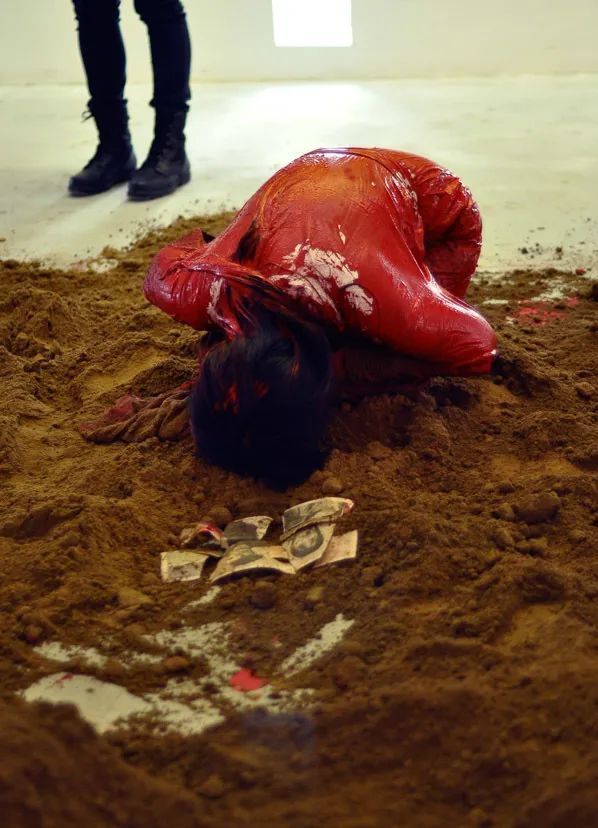
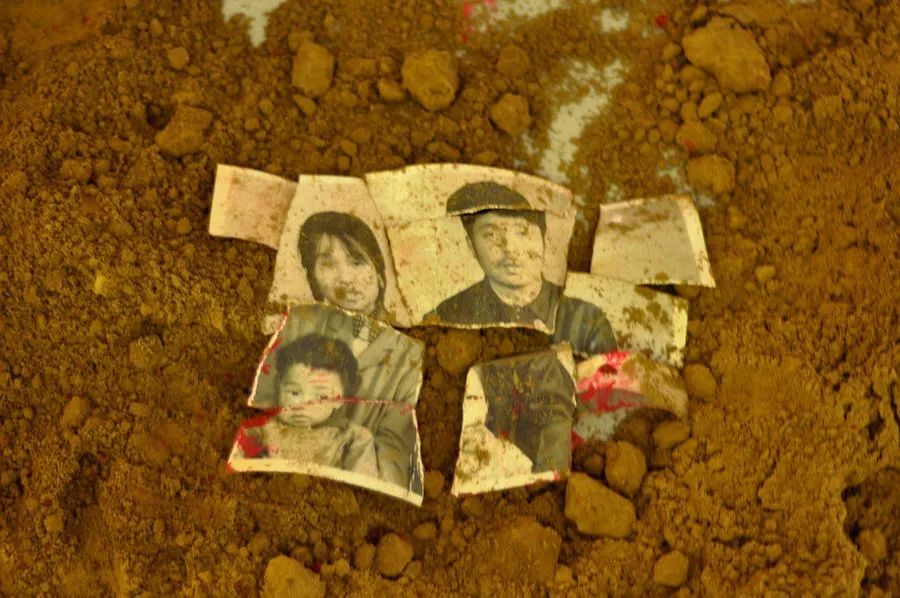
Li Jiete:
The work "Relationship" was inspired by the story of the comfort woman: when she was taken away to be a comfort woman, the men in her family (father and brother) just stood by and watched, and finally escaped back home, and were criticized during the Cultural Revolution. It was also her; it was a woman who suffered, it was a woman who was innocent, and it was a woman who bore all the blame. You have not experienced World War II or the Cultural Revolution, so why do you feel strong empathy for the story of this comfort woman? Some people would say that the Mao era has passed. Are those stories still relevant to young women in China today? Are we still experiencing similar difficulties?
Li Xinmo:
I think the most important characteristic of an artist is empathy. Although some things have not happened to me, I can still relate to them even if they happen to others. Although I did not experience the Cultural Revolution or World War II, I have read a lot of articles about that period, as well as some oral histories. I can feel the life experiences of those individuals through words. Maybe I have a more sensitive and powerful perceptual system and can truly experience other people's feelings, especially pain.
I have read a lot of information about comfort women. Their experiences were so tragic that they shocked my heart. I have always wanted to make a work about them. I happened to be on the train going to the Guangzhou Live Art Festival when I read a comfort woman’s dictation. That article made my heart ache so much that I couldn’t let it go. So I decided to make a work related to comfort women, which is the performance "Relationship Series 3: Bed".
Indeed, World War II and the Maoist era have become history, but history needs to be remembered. This work is more about a record of the fate of women in a period of history. I hope to preserve that period of history in an artistic way so that people can remember them instead of forgetting them. In addition, there are no comfort women anymore, but the sexual exploitation and sexual slavery of women still exists. Trafficking and rape of women are still prevalent today. On the dark web, women are clearly priced, and in poor mountain villages, trafficked women are locked up and become sex slaves. The history of patriarchal society is also the history of women being enslaved and raped, and this history continues.
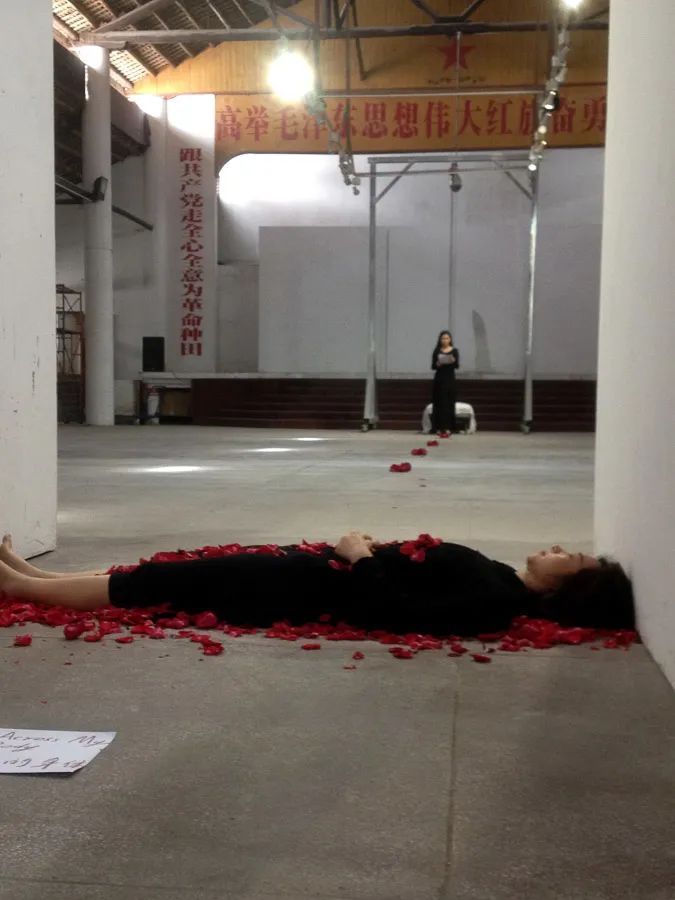
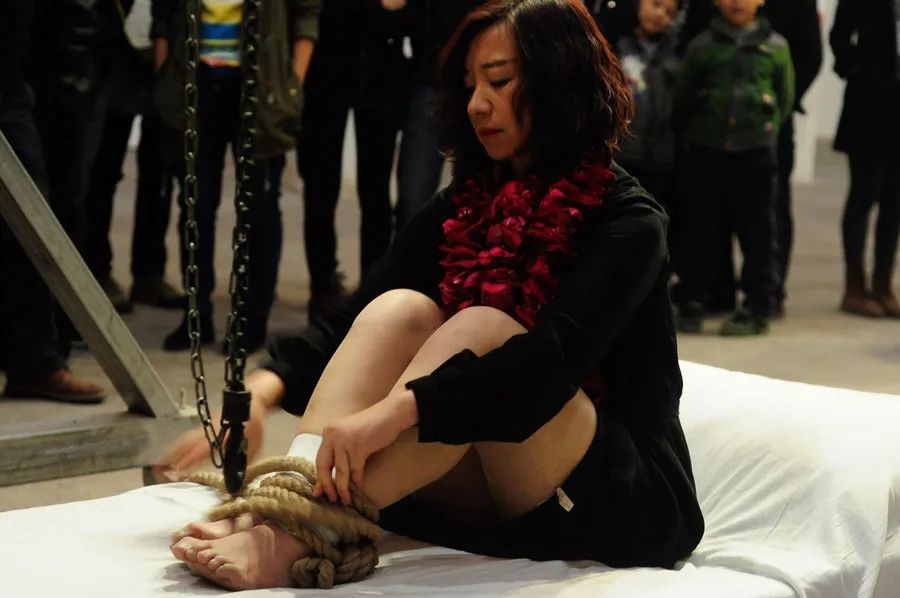

Part III. Be brave enough to say I am a feminist without fear of being stigmatized
Li Jiete:
The word "feminism" is severely stigmatized in China. You once said that you are reviled whenever you talk about women's rights online. To say that you are a feminist in China is to marginalize yourself. No one will come to you for an exhibition. If someone Question, how would you explain to them the true meaning of "feminism"? What gives you the courage to keep saying that you are a feminist?
Li Xinmo:
When I look back on my life, I realize that moving toward feminism was inevitable. When I was a child, I saw my father's violence and my mother's patience. At that time, I secretly determined that I would not live like my mother when I grew up. I once persuaded my mother to divorce, and I also saw her resist by running away from home, although she failed in the end. My childhood experiences made me full of rebellious spirit, and independence and freedom became my most important beliefs. I experienced two failed relationships (one was controlled and one was cheated on) and became a single mother. When all this happened to me, I often thought it was my fate and often wondered if there was something wrong with me. But after I came into contact with, read about, and learned about feminist thought, I realized that what I experienced was not just my experience. Many women had the same experience as me. It's just that I didn't pay attention to them before.
When I started searching for women-related issues on the Internet, I found that they were so common, including child rape, domestic violence, sexual exploitation, sexual deception, teenage abortion, etc. Only then did I understand that women’s misfortunes are not due to individual fate, but to the structural oppression caused by the entire male-dominated society. It is a problem for the entire society. And this problem has been around for a long time and has never been solved since ancient times. It seems that the situation of women has improved now than before. For example, women can receive education and participate in social and cultural activities. However, the patriarchal culture formed over thousands of years has not been shaken, and the existing discipline and shaping of women has not changed much. .
I study feminist theory while creating, and I also write about feminism. During this process, I found that I had undergone tremendous changes. First of all, the perspective of observation and thinking of feminism and sociology was gradually established. I began to gradually move from the personal world to caring for society, others and all women. My heart gradually became stronger and more determined. Feminism taught me a sense of spiritual independence. I also freed myself from the emotional patterns that had been molded by culture and no longer framed myself in terms of male approval or heterosexual marriage. I am also more clear, objective and rational about my past life and the things I have experienced. My world has been completely transformed by feminist thought, so I am grateful for the history of feminist thought. Precisely because feminism has helped my spiritual world, I hope to spread feminist ideas and help more women understand themselves and the society they live in. This is also the reason why I continue to speak about feminism in an artistic way and continue to advocate women’s rights in public spaces. Of course, being regarded as a heretic, excluded, and stigmatized also caused me tremendous mental pressure and distress. But I still insist on saying and doing this. The most important reason is that I firmly believe that what I am doing is right. During this process, I also met some fellow feminists who are activists, theorists, and curators. Their support for me is also an important reason why I have reached this point. Also, the emotions and responses from the audiences who see my works give me great motivation. As well as young people who saw my works on the Internet, they wrote to me, conducted interviews, and did research, which gave me great encouragement.
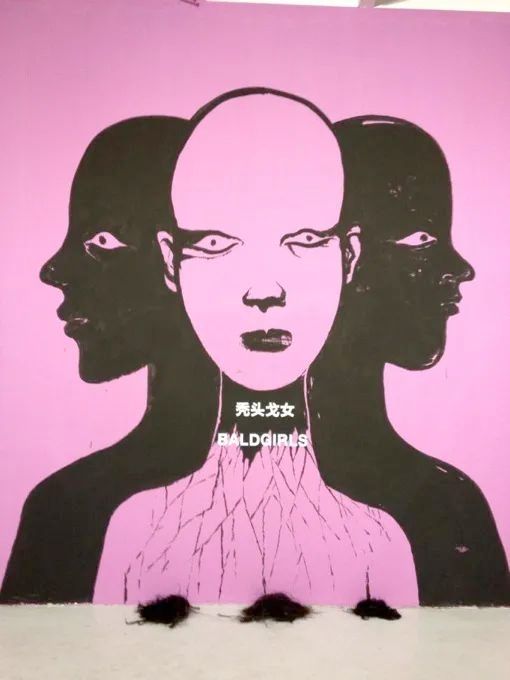
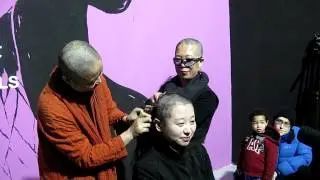
Li Jiete:
People often expect art to be beautiful, just like they expect women to be beautiful. But your works don’t pay much attention to beauty. Instead, they have a violent aesthetic and a sense of violation, which makes people feel sharp, stinging and uneasy. Why did you choose this expression? How do you respond when someone questions you, that your art stinks, that it's too much, that it's too much?
Li Xinmo:
From the perspective of art history, the aesthetics of the classical period pursued a harmonious, curvilinear, and aesthetic sense of beauty, which was brought to its extreme in the paintings of the female body. Like most of the nude women in the paintings displayed in the Louvre, these beautiful female bodies abound in the history of art. These depictions of women are entirely from a male perspective. Women are treated like still lifes and vases. depict. In these paintings, female bodies are projected into the male gaze, and they are solidified and framed by stereotypes, such as purity, gracefulness, sexiness, etc. However, women’s real living experience has been obscured. Feminist art is a rebellion against the aesthetics of a male perspective and a resistance to the male gaze. They express authentic female presence and voices based on their own experiences. So we see that since the emergence of feminist art, the previous aesthetic has been broken, and the aesthetic male perspective has become a symbol of vulgarity. The aesthetic style of classical realism has actually long since withdrawn from the stage of art history. Especially after the emergence of contemporary art, art no longer uses aesthetics as a standard. In fact, before contemporary art, during the modernist period, art after Cézanne, such as Expressionism, had long abandoned the pursuit of aesthetics, and instead developed in the direction of "de-aesthetics" or even "appreciation of ugliness", such as Munch, de Kooning, etc.

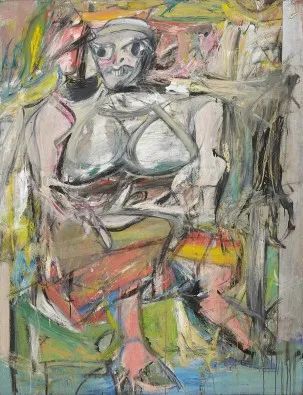
When I started creating, I actually got into contemporary art and was influenced by feminist art. Therefore, my works no longer pursue aesthetics, but oppose aesthetic taste in the traditional sense. I hope my work is authentic and powerful and can shock or resonate in people's hearts. It is also because of my continued focus on death, pain, violence, and pursuit of the ultimate that my works often present something disturbing, stinging, and sharp. These cannot produce aesthetic pleasure, but they can trigger shock and thinking. This is what I want too. My appearance is actually not particularly flamboyant, and I even look a bit weak, so I need something strong to destroy my weakness, which is what I have always shown in my behavior.
My works, especially the early works, are indeed quite violent, such as "Memory of the Vagina", "Statement of Scars", "Self-Portrait of Menstrual Blood"... Violence, body, sexual organs, menstrual blood, these are popular aesthetics and Things that are rejected by Chinese cultural traditions will indeed cause everyone's attack and discomfort. Some people say it's too direct; some people say it's too extreme; some people say it's too extreme... I generally ignore these comments. Because I know what I am doing and what the meaning of these works is. Mainly because I study art theory while creating, I can interpret my work very clearly, and I know the truth that these works reveal. Although I sometimes feel fragile, I have still made it this far, and these works are still meaningful.
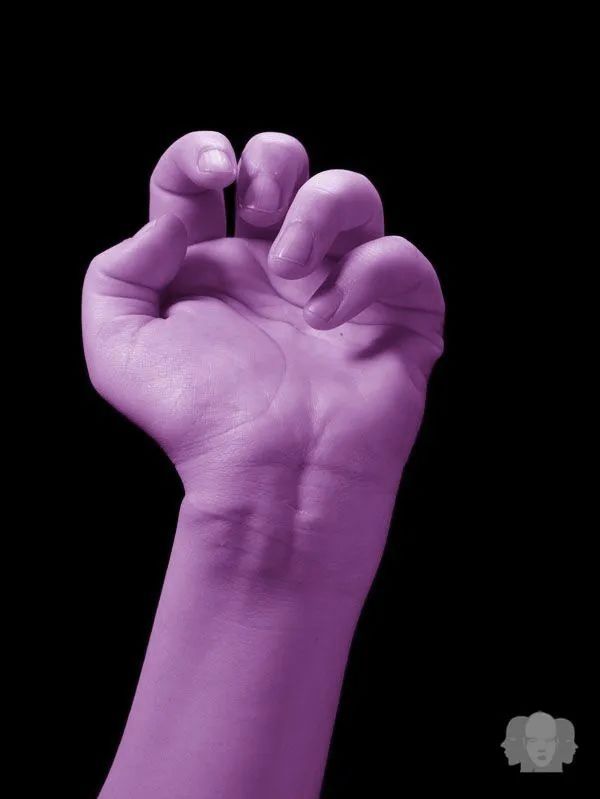
Li Jiete:
Your depiction of the vagina reminds me of Gustave Courbet’s famous painting The Origin of the World. Were you influenced by Courbet? What's the difference between men and women when they gaze into their vaginas?
Li Xinmo:
When I started painting with menstrual blood, I was not aware of this work by Courbet. I use a very direct approach to depicting the female vagina. I drew pubic hair as grass and river water flowing from my vagina. This work expresses the connection between women and nature. The female body becomes a part of the earth. The female body is a place of growth, and nature nurtures life in this way.
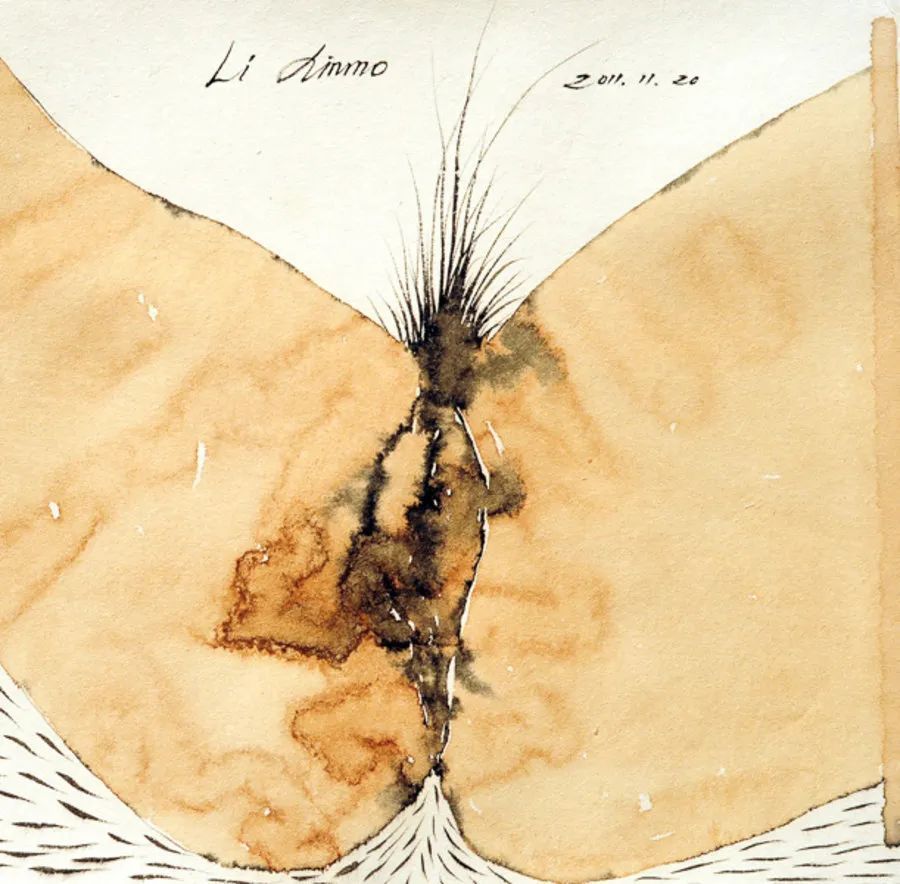
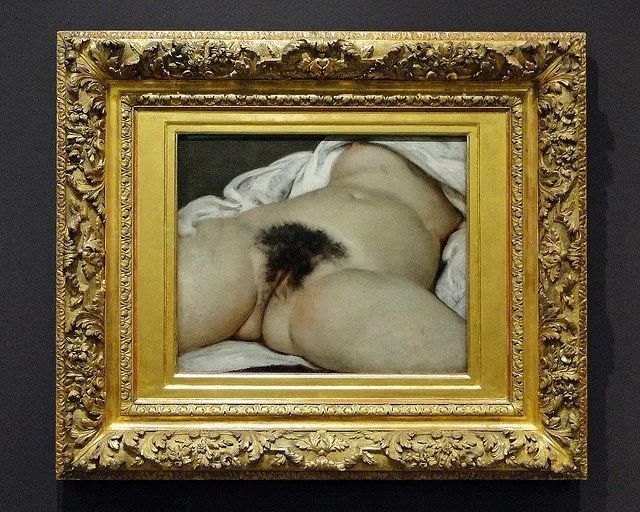
Part IV. The world of cyborgs allows us to reimagine gender relations
Li Jiete:
Your latest creation adopts the most trendy digital art form to explore the relationship between man and machine, man and technology. What story is this series telling? Is there any correlation with the patriarchal social system that is objectified and othered?
Li Xinmo:
The "Daydream" series is an artistic experiment I started in 2013 and continues to this day. I initially started some paintings on paper during my residency in Germany. In these works, I combined humans (women), animals, and plants, incorporating elements of mythology and imagination. Looking back at these paintings, I seem to have created some new species without knowing it. They carry some transcendent power and possess a mysterious and terrifying aura. In the process of painting these works, I try to empty myself as much as possible and let my subconscious mind work. Those images seem to come from another time, space and dimension. They just came to this world with the help of my hands. As I understand it, a person is the process of a soul entering a body. And in the process of painting these, I can also feel that I am giving shape to some hidden souls. I build their bodies with my paintbrush, and when they are painted, they come to life. When I look at the figures in these paintings, I can feel that they are real and I can see their souls.

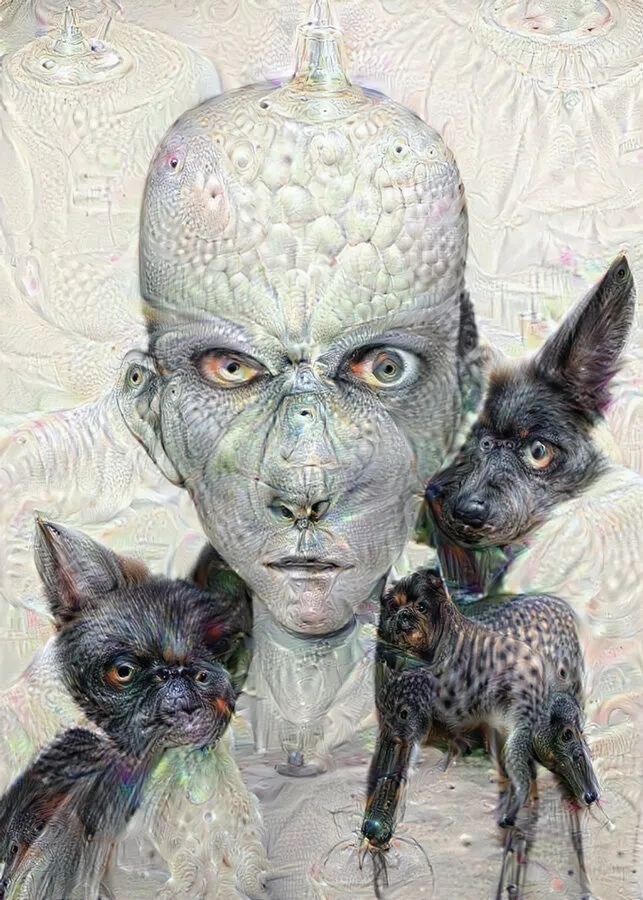
In 2015, I came into contact with artificial intelligence vision Deepdream. In 2017, I completed the "Daydream" series. I uploaded the paintings to Deepdream, and after reinterpretation by artificial intelligence, a new image was generated. The image created by the brush was recreated by artificial intelligence, with unexpected results. These images are given a futuristic feel. They possess strange colors, rich textures, and intricate details that are beyond the reach of man-made objects. It was only then that the creation of these life forms seemed to be completed.
I've been working on this series. I have an expectation that these life forms existing in the virtual world can become a new form of life in this world. In 2022, I reprocessed these works and made them move in the virtual space. They began to speak and make a peculiar sound. They are telling a hidden, untold story. I named this series "Rebirth". Coincidentally, these works touch on the concept of "posthumanity". These images are completed by the combination of human and artificial intelligence. They are multiple and complex life images that do not exist in human society. They exist in the virtual world, which seems to show some important characteristics of post-human beings.
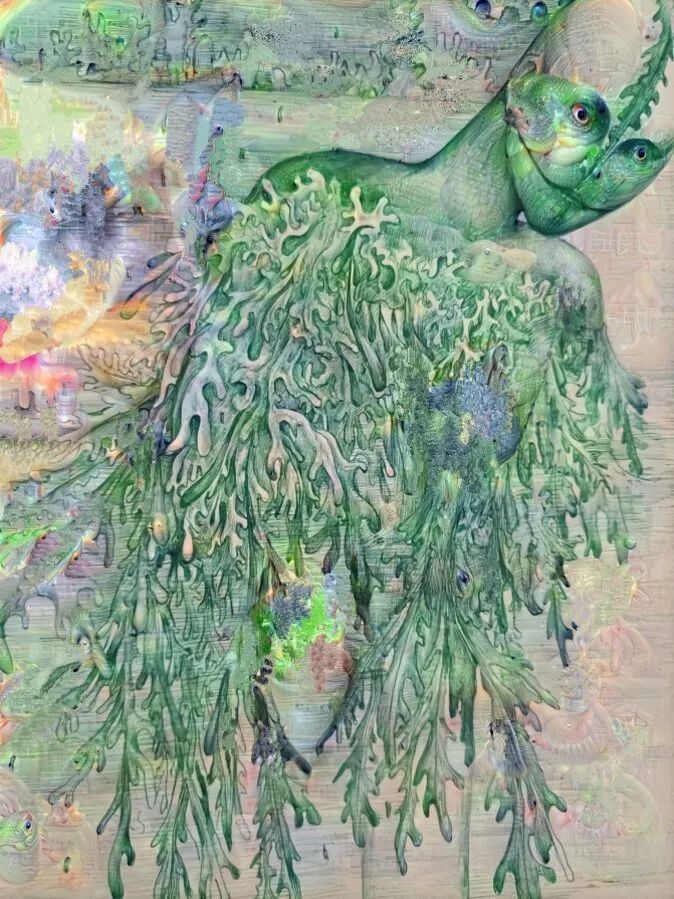
When I started creating these works, I was thinking more about the concept of artificial intelligence. But when I looked at them from a feminist perspective, I found that I was creating a new mythical image of future women. These works focus on women, but these female images are completely different from those in the past. Their identities are unclear, they have the characteristics of half-human and half-god, and at the same time they have a futuristic atmosphere. I later associated these works with “cyborg feminism.”
In her famous work Cyborg Manifesto: Science, Technology, and Socialist Feminism in the Late Twentieth Century (1985), Donna Haraway envisioned a cyborg world. , cyborgs take the initiative to end women's fear, anxiety and loneliness, because in cyborg society, the distinction between men and women is no longer meaningful, and the boundaries between men and women have become blurred. Women are no longer the mother body that breeds offspring. Reproduction can be achieved through information exchange or artificial cultivation. Women who are separated from the reproductive function are also separated from the control of existing social structures and narratives.
Cyborg shows us a different life form that breaks the boundaries between living things and non-living things, humans and machines, and material and immaterial things. This also means that the human-centered world established since ancient Greece and the dualistic concept system began to collapse. People whose subjective existence is defined by their body and consciousness will gradually disappear, and at the same time, the concept of gender will also disintegrate.
通过艺术赋能女性
Comment…